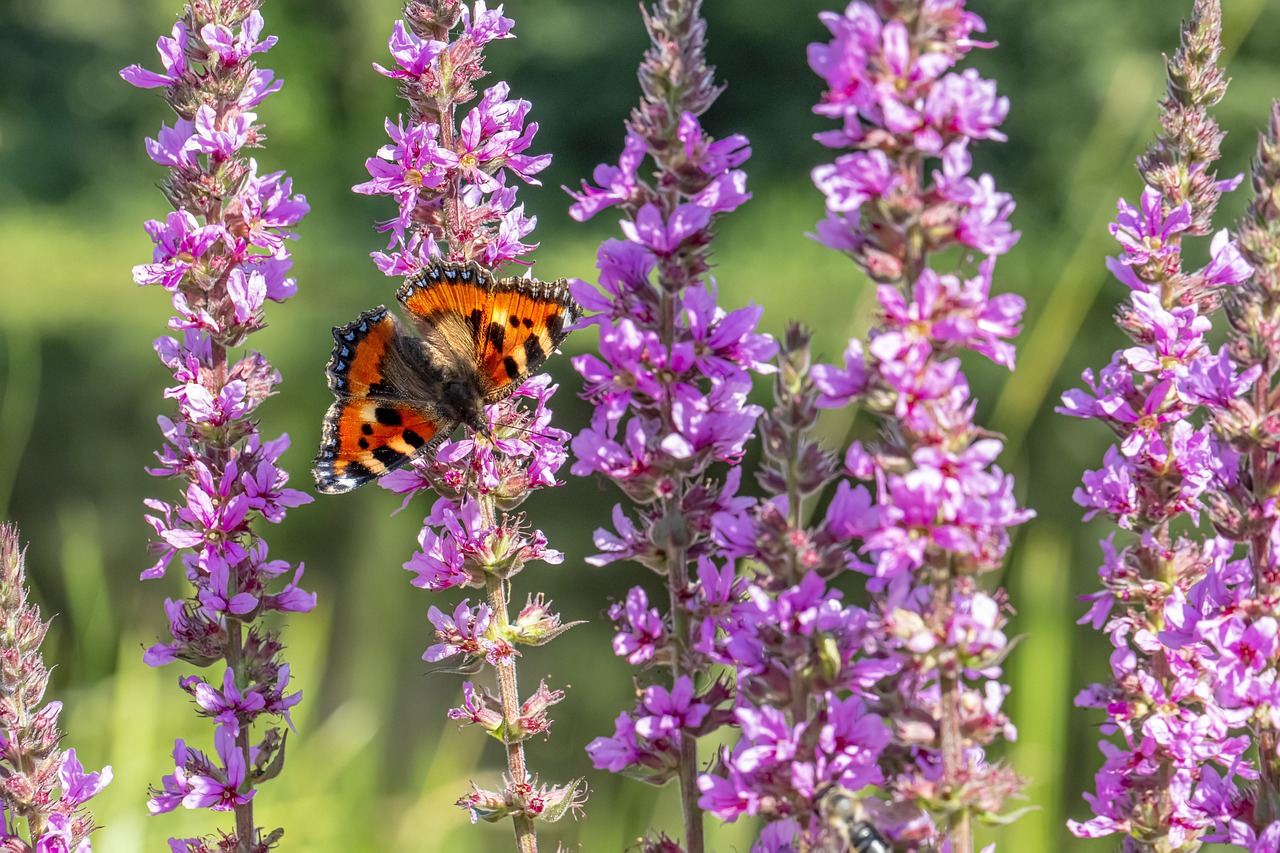The Small Tortoiseshell butterfly (Aglais urticae) is a colorful and widespread butterfly species found in Europe, Asia, and parts of North Africa. Here’s some information about this beautiful butterfly:
- Appearance: Small Tortoiseshell butterflies have striking orange wings with black and yellow markings. The forewings and hindwings are bordered with black and adorned with blue marginal spots. The underside of the wings is mottled brown, providing camouflage when the butterfly is at rest.
- Habitat: Small Tortoiseshell butterflies inhabit a variety of habitats, including gardens, meadows, woodland edges, hedgerows, and parks. They are often seen basking in the sun or feeding on nectar from flowers.
- Lifecycle: Small Tortoiseshell butterflies undergo complete metamorphosis, progressing through egg, larva (caterpillar), pupa (chrysalis), and adult stages. The caterpillars feed on stinging nettles (Urtica dioica), while the adults primarily feed on nectar from a wide range of flowers.
- Seasonality: Small Tortoiseshell butterflies typically have two or more broods per year, with adults flying from spring to autumn. They overwinter as adults in sheltered locations such as buildings or rock crevices, emerging in the spring to mate and lay eggs.
- Behavior: Small Tortoiseshell butterflies are agile fliers and can often be seen darting among flowers or basking in sunny spots. They are known to migrate over long distances in search of suitable breeding and overwintering sites.
- Conservation: While the Small Tortoiseshell butterfly is not considered globally threatened, populations may be declining in some regions due to habitat loss, pesticide use, and climate change. Conservation efforts aimed at preserving and restoring habitat, including the planting of native wildflowers and providing suitable breeding sites, can benefit this species and other pollinators.
Overall, the Small Tortoiseshell butterfly is a beloved and iconic species appreciated by butterfly enthusiasts and nature lovers for its beauty, behavior, and ecological importance as a pollinator.
Visited 313 times, 15 visit(s) today
Views: 473
Subscribe to the newsletter:
